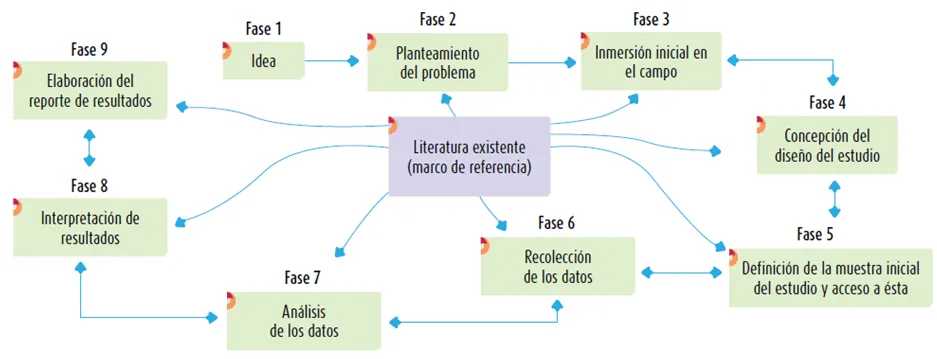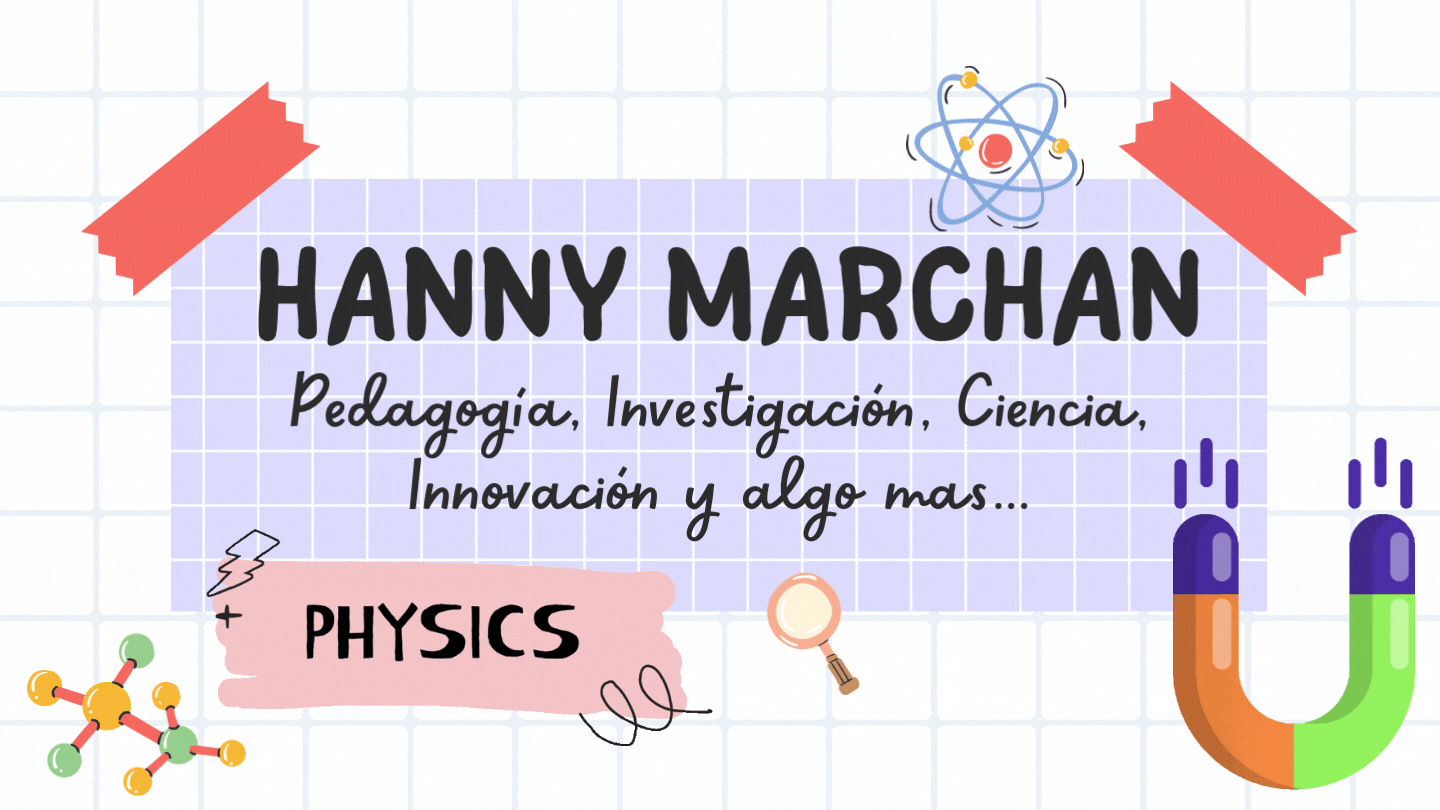Hello dear hive community! 😉
¡Hola querida comunidad de hive! 😉
A few weeks ago we started talking about research approaches, starting with the quantitative approach, how it perceives reality and what are the types of quantitative research. Today we will dedicate ourselves to learn a little about the qualitative approach.
Hace algunas semanas atrás comenzamos a hablar sobre los enfoques de investigación, iniciando con el enfoque cuantitativo, como percibe la realidad y cuáles son los tipos de investigación cuantitativa. El día de hoy nos dedicaremos a conocer un poco sobre el enfoque cualitativo.

Imagen realizada con la página web de diseño gráfico y composición de imágenes Canva // Image made with the graphic design and image composition website Canva.

Qualitative research is still a very controversial topic, as many researchers fail to adopt this approach as a working method. This approach, like the quantitative one, is also governed by the norms and rules of research methodology. However, the results obtained from the research questions and hypotheses precede data collection and analysis, as in quantitative research; however, the opposite is the case in qualitative studies, where the questions and hypotheses can be carried out before, during or after data collection and analysis. Mostly, these activities first help to unveil the most relevant research questions, which can then be refined and answered.
In this type of research, the inquiry action takes place dynamically in all directions, i.e., between the facts and their interpretation. It turns out to be a circular type process, in which the sequence is not necessarily the same, as it may vary depending on each study. Hernández, Fernández and Baptista (2014) represent it as follows:
La investigación cualitativa aun es un tema muy controversial, ya que muchos investigadores no logran adoptar este enfoque como método de trabajo. Este enfoque igualmente que el cuantitativo, también se rige por las normas y reglas de la metodología de la investigación. No obstante, los resultados que se obtienen de las preguntas de investigación e hipótesis precede a la recolección y el análisis de datos, como ocurre en la investigación cuantitativa; sin embargo el caso contrario ocurre en los estudios cualitativos, donde las preguntas e hipótesis se pueden llevar a cabo antes, durante o después la recolección y el análisis de los datos. Mayormente, estas actividades ayudan primero a develar cuáles son las preguntas de investigación más relevantes; así, posteriormente se puede perfeccionar y responder.
En este tipo de investigación, la acción indagatoria se lleva a cabo de manera dinámica en todos los sentidos; es decir, entre los hechos y su interpretación. Resulta ser un proceso de tipo circular, en el que la secuencia no necesariamente es la misma, ya que puede variar dependiendo de cada estudio. Hernández, Fernández y Baptista (2014) lo representan de la siguiente manera:

Fuente: Hernández, Fernández y Baptista (2014)
It is important to note that the scheme shown is simply an approximation, since its complexity and flexibility are greater. However, in order to understand a little better, it is necessary to keep in mind the following:
1- Although there is a previous documentary review, this can be expanded at any stage of the study and support from the scope of the study to the construction of the findings obtained.
2- In this type of research, if necessary, it is necessary to go back to the previous stages of the research.
An example of what we mentioned is that when building our research, the design of the study can change when the initial sample is defined, a case of this may be the case that you want to observe a group of people in a natural environment, but for some reason it is not feasible to make the desired observations; therefore, the sample, the scope of study must change, and for this reason the design must be adjusted.
Es importante acotar, que el esquema mostrado es simplemente una aproximación, ya que su complejidad y flexibilidad son mayores. Sin embargo para poder comprender un poco mejor, es necesario tener presente lo siguiente:
1- A pesar de que existe una revisión documental previa, esto puede ampliarse en cualquier etapa del estudio y apoyar desde el ámbito de estudio hasta la construcción de los hallazgos obtenidos.
2- En este tipo de investigación, si se hace necesario hay que regresar a las etapas previas de la investigación.
Un ejemplo de lo que mencionamos es que al construir nuestra investigación, el diseño del estudio puede cambiar cuando se define la muestra inicial, un caso de ello puede ser el caso que se quiera observar a un grupo de personas en un ámbito natural, pero por algún motivo resulta no es viable efectuar las observaciones deseadas; por ende, la muestra, el ámbito de estudio deben cambiar, y por tal motivo el diseño debe ajustarse.

Pixabay
However, when we start with the data analysis, we may need a larger number of participants or other people than we thought we could use, which leads us to modify the original sample. It may also happen that we need to analyze another set of data that we had not considered at the beginning. For example, when we started to construct a life history, we thought that interviews with individuals would be sufficient, but as we became immersed in the research, we realized that to understand them better, we had to resort to their personal diaries.
Another important aspect of qualitative research lies in the fact that immersing ourselves in the field of work means becoming aware of the environment in which the study will be carried out, it also helps us to identify the actors who provide us with key information, guide us as a researcher and also allows us to verify the feasibility of the study. In the case of this type of research, the sample, collection and analysis of information are three processes that are carried out simultaneously.
No obstante, cuándo se comienza con el análisis de los datos, se puede necesitar un número mayor de participantes u otras personas, de las que pensábamos se podían utilizar, esto nos lleva a modificar la muestra trabajada originalmente. También se puede presentar el caso, de que se necesite analizar otra case de datos, que al principio no habíamos considerados desde un principio. Por ejemplo: cuando empezamos a construir una historia de vida pensamos que las entrevistas realizadas a los individuos serian suficientes, pero al sumergirnos en la investigación nos damos cuenta que para comprenderlos mejor, tenemos que recurrir a sus diarios personales.
Otro aspecto importante de la investigación cualitativa, radica en el hecho de que al sumergirnos en el campo de trabajo significa sensibilizarnos con el ambiente o entorno en el cual se llevará a cabo el estudio, también nos facilita identificar los actores que nos aporten información clave, nos guíen como investigador y además permite verificar la factibilidad del estudio. En el caso de este tipo de investigación la muestra, recolección y análisis de la información son tres procesos que se realizan de manera simultánea.

Pixabay
Apart from all that we have mentioned, the qualitative approach can be summarized in the following characteristics:
1- The researcher poses a disturbing situation, but does not follow a defined pattern.
2- Almost always in quantitative research we start from a theory and then go to empiricism to check that this is true. In qualitative research we start by first examining the facts and then develop a coherent theory to represent those observed facts.
3- In other words, the qualitative approach is based more on a logical and inductive process.
4- In this type of research, hypotheses are not tested; they are generated as the research progresses.
5- The main characteristic of this approach is the collection of non-standardized data, which consists of perspectives, opinions and points of view of the participants, such as emotions, interests, priorities and experiences. The way in which the information is collected is in an open manner, in written or verbal language without pigeonholing the responses of the interviewees.
6- The information process is constructed in a flexible manner, the purpose of the research is to reconstruct reality, as observed by the social actors. It is a holistic process.
7- In qualitative research there is no manipulation of reality.
8- It is based on the interpretative paradigm, which focuses on understanding the meaning of the actions of living beings.
9- There is no absolute reality, nor concrete results.
10- This approach is considered naturalistic, since it focuses on studying phenomena and beings in their everyday life; it is interpretative, because it seeks to make sense of the phenomena found, but in terms of the meanings that people give them.
In conclusion, the qualitative research approach is based on the active acquisition of knowledge from the study of non-standardized data and where the protagonists are the social actors within the research, focused on their opinions, experiences, feelings, emotions and in which there are no focused conclusions but findings that are respectively related to existing theories and interpretations that the researcher must make.
Aparte de todo lo que hemos mencionado, el enfoque cualitativo se puede resumir en las siguientes características:
1- El investigador plantea una situación inquietante, pero no sigue un patrón definido.
2- Casi siempre en la investigación cuantitativa partimos de una teoría y luego vamos al empirismo para comprobar que esto sea cierto. En una investigación cualitativa se comienza primero examinando los hechos y después desarrollamos una teoría coherente para representar esos hechos observados.
3- Es decir, el enfoque cualitativo se basa más en una lógica y un proceso inductivo.
4- En este tipo de investigación no se prueban hipótesis, las mismas se generan a medida que se avanza.
5- La principal característica que presente este enfoque es la recolección de datos no estandarizados, la misma consta de perspectivas, opiniones y puntos de vista de los participantes, tales como emociones, intereses, prioridades y experiencias. La manera en cómo se recolecta la información es de manera abierta, en un lenguaje escrito o verbal sin encasillar las respuestas de los entrevistados.
6- El proceso de información se construye de manera flexible, la finalidad de la investigación es reconstruir la realidad, tal como la observan los actores sociales. Es un proceso holístico.
7- En una investigación cualitativa no existe manipulación de la realidad.
8- Está fundamentada bajo el paradigma interpretativo, el cual se enfoca en el entendimiento del significado de las acciones de los seres vivos.
9- No existe realidad absoluta, ni resultados concretos.
10- Dicho enfoque es considerado naturalista, ya que se centra en estudiar los fenómenos y los seres dentro de su cotidianidad; es interpretativo, porque busca encontrarle sentido a los fenómenos hallados pero en función de los significados que las personas les otorguen.
En conclusión, el enfoque de investigación cualitativa se basa en la adquisición activa del conocimiento partiendo del estudio de datos no estandarizados y donde los protagonistas son los actores sociales dentro de la investigación, centrado en sus opiniones, vivencias, sentimientos, emociones y en la cual no existen conclusiones centradas sino hallazgos que respectivamente se relacionan con teorías existentes e interpretaciones que el investigador debe realizar.

References
Hernández,R; Fernández, C & Baptista, P. (2014). Research Methodology. Mexico: Mc Graw Hill
Martínez, M. (2006). Science and Art in Qualitative Methodology. México. Trillas.
Piñero, M & Rivera, M. (2013). Qualitative Research: Procedural Orientations. Barquisimeto: UPEL-IPB.
Referencias
Hernández,R; Fernández, C & Baptista, P. (2014). Metodología de la Investigación. Mexico: Mc Graw Hill.
Martínez, M. (2006). Ciencia y Arte en la Metodología Cualitativa. México. Trillas.
Piñero, M & Rivera, M. (2013). Investigación Cualitativa: Orientaciones procedimentales. Barquisimeto: UPEL-IPB.


